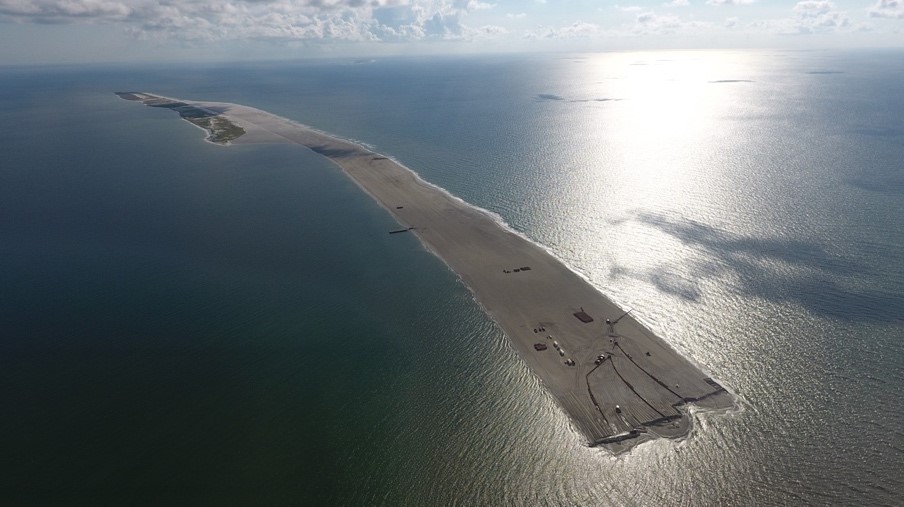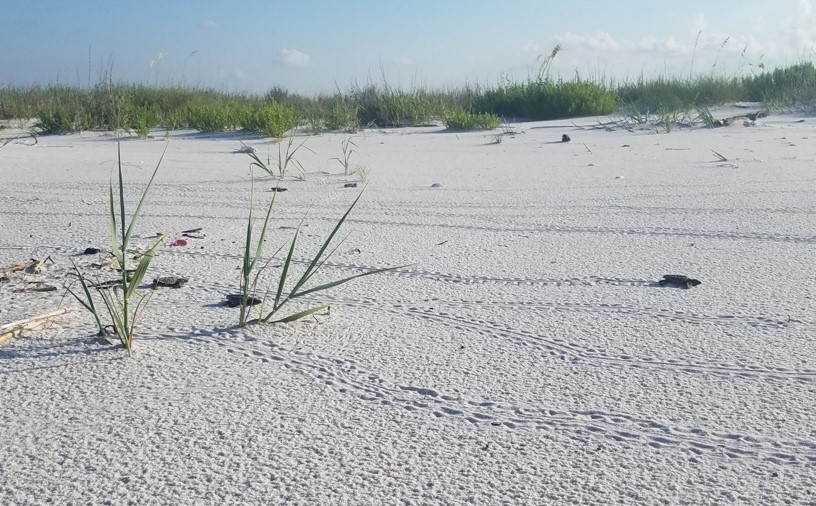The Jacksonville District is in the process of offloading approximately 140,000 cubic yards from the Manatee Harbor Dredge Material Management Area (DMMA) to Washington Park (see image to left), owned by Mana tee County (FL). Dredged material capacity at Manatee Harbor was nearly exhausted and the project provides capacity for future dredging events to support for future maintenance dredging.
tee County (FL). Dredged material capacity at Manatee Harbor was nearly exhausted and the project provides capacity for future dredging events to support for future maintenance dredging.
Using the offloaded dredged material as fill, the County has a master plan to convert the Washington Park borrow pit into an environmental preserve aiming to mimic the historical ratio of wetland and upland habitats. The beneficial use offloading strategy supports long-term maintenance of the Manatee Harbor Channel and provides social and environmental benefits for Manatee County. For additional information about how the project is fits into Manatee County’s plan for Washington Park, visit www.mymanatee.org/washingtonpark.
MISSISSIPPI COASTAL IMPROVEMENTS PROGRAM (MSCIP)
The Mobile District recently completed the construction of the Mississippi Coastal Improvements Comprehensive Barrier Island Restoration project with the placement of over 22 million cubic yards of sediment to restore the system. The project was recently highlighted in a podcast “Engineering with Nature”, exploring how infrastructure will play a role in worldwide recovery as they highlight success in coastal collaboration and will also be featured in the upcoming “Engineering With Nature: An Atlas Vol. 2” available on 7 April 2021 at: https://ewn.el.erdc.dren.mil/.
The Mississippi Coastal Improvements Comprehensive Barrier Island Restoration project is a testiment to the collaboration between USACE, state and federal agencies, stakeholders, academia, and industry to develop a triple win that provides environmental, economic and social benefits; integrating in regional sediment management practices and engineering with nature techniques.

Ship Island (During-construction photo of the closure of the breach, looking east)

Ship Island Turtle Hatching
FY21 NATIONAL RSM PROGRAM FUNDED PROJECTS
The National RSM Program supports initiatives that develop and demonstrate sustainable practices that systematically increase benefits and reduce lifecycle costs for the Corps Navigation, Flood Risk Management, and Environmental missions through an annual Request for Proposals (RFP) process. Four SAD proposals were funded for FY21.
Jacksonville District: Northeast Florida RSM – A Guide to Using Dredged Material for Estuarine Restoration
Mobile District: Field Implementation of Belowground Biomass for Increased Dune Stability and Resiliency
Mobile District: Synthesis of Sediment Budget Assessments along the Northern Gulf of Mexico from the Pearl River to Apalachicola Bay
Savannah District: Identification of Dredged Material Beneficial Uses from Geophysical Analysis of Sediment Borings
OTHER LINKS OF INTEREST
Hydrographic surveys
https://navigation.usace.army.mil/survey/hydro
Optimization Tool
http://sajgeo.saj.usace.army.mil/rsm-dash